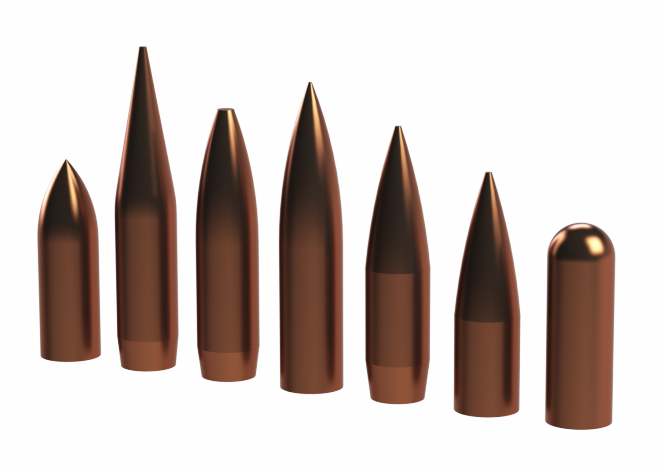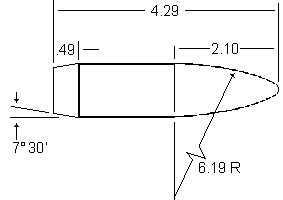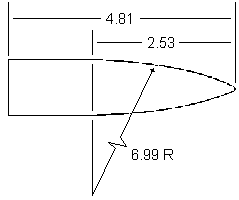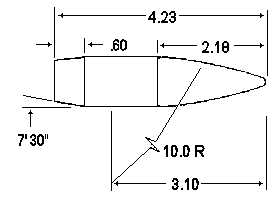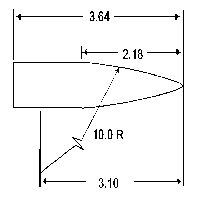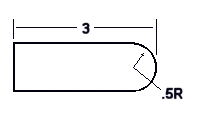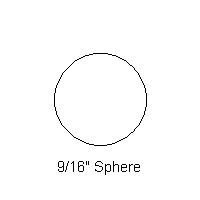When a bullet flies through the air, forces called “drag” are exerted upon it. These forces slow down the bullet as it flies, but they don’t act the same way on every bullet. While the subject of aerodynamics is extremely complex, one way to account for differences in bullet drag that is commonly used in the world of small arms is the “ballistic coefficient”.
A ballistic coefficient is a comparative value for a given bullet, showing its relative resistance to drag versus a model projectile that has an empirically established set of drag characteristics. There can be as many model projectiles as there are different bullets, but which ballistic coefficient type is used depends on the model and how good of a match it is for the bullet being measured.
There are nine primary drag models, two of which are commonly used. These are:
This drag model is one of the oldest, and is the one in most common use by far. However, as its shape suggests, it’s a poor model for most modern bullets.
This projectile has a conical ogive, which is uncommon among small arms projectiles, but more common in autocannon projectiles.
The G5 model has a tangent ogive and boattail, making it useful for bullets that share that basic shape. However, it is so close to G7 that it is almost never used.
The G6 ballistic coefficient is very useful for accurately predicting the behavior of of flat-based tangent ogive bullets, such as the common S-Patrone type military spitzer projectile. However, most outlets erroneously use G1 or G7 BCs for projectiles of this shape.
The G7 model is the second most common, and is a much more accurate model for modern rifle projectiles than the G1 model. However, even it is overused, being often applied to flat-based bullets that do not really share its shape.
The G8 model is similar to the G6 model, but for secant-ogive flat-based bullets. It is rarely used due to both secant-ogive flat-based bullets being relatively uncommon, and because of its similarity to the G6 model.
The GL model is for now-obsolete military round nosed FMJ projectiles. It is almost never used, but could be useful for reconstructing the performance of older military ammunition.
The GS model is for perfect spheres, and could be used for musketballs and BBs, however very few ballistic calculators support it.
Finally, there’s RA4:
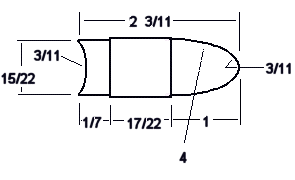
This model is designed for heeled bullets commonly used in rimfire rounds like the .22 Long Rifle. It is rarely used.
For a given bullet, its ballistic coefficient as matched with an appropriate model can be calculated via the formula below:
Sectional Density / Form Factor = Ballistic Coefficient
We will discuss form factor in a later post, but the important thing to know now is that form factors are not universal. An i7 Form Factor value only works with the G7 ballistic coefficient; you need to use a different form factor for a different ballistic model. Sectional density is, as I’ve covered before, calculated by the formula below:
(Mass of the bullet in grains / (Diameter of the bullet in inches)^2) / 7000
Most ballistic calculators only allow you to use one, or maybe two different ballistic coefficients (G1 and sometimes also G7), but the ballistic calculator at JBM Ballistics allows you to use all of the ones I have discussed here (except GS), plus a GI model that I don’t think I’ve ever seen before. I have gotten really good results from JBM’s calculator, and have used it for all of the ballistic models I’ve produced for TFB. Unlike many other calculators, it properly accounts for the reduction in wave drag that comes as a projectile loses speed, especially in the transonic and subsonic flight regimes. Plus, it has by far the most options of any free calculator I have used.
If you are interested in doing your own calculations, I have over the past several years collected and created ballistic coefficient figures for various projectiles, the list of which you can find in a spreadsheet over at my blog. It is based on a list originally collated by Fr. Frog over at his website, although I started modifying the spreadsheet so long ago now that it’s difficult for me to tell what parts of the work were whose. I do know that for my spreadsheet, much of the original work was done by Brian Litz, so many thanks to him.
 Your Privacy Choices
Your Privacy Choices
